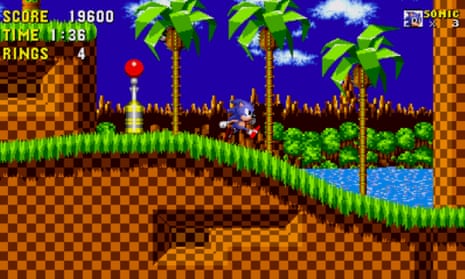Nature abhors a vacuum – and so does the video games industry. Over the last year, Nintendo and Sony have each announced new versions of their classic consoles: the Mini NES and SNES machines are outselling modern platforms, and the forthcoming PlayStation Classic is stirring up interest. So what of Sega, the creator of the Master System and the Mega Drive (AKA Genesis), the console that brought the arcade home in the late 1980s?
When it comes to retro consoles, until now there have only been cheap third-party Mega Drive retro consoles, which often have popular games built-in but use software emulation to replicate the original hardware. This has meant that games often run with terrible input lag and tend to look horrible on contemporary LED displays, making for a disappointing nostalgic experience.
However, Analogue, a small specialist company in Seattle, Washington, is creating the Mega SG, a high-end, high-spec reproduction of the Mega Drive that will faithfully run the original cartridge games on any television. The console will be available in four variants – the three colour schemes of the original Japanese, US and European models, as well as white. Shipping is set to begin in spring 2019.

Unlike previous attempts, the Mega SG is not a glorified software emulator tucked into a themed plastic box. As with the Analogue’s critically acclaimed Nintendo reproductions – the Nt Mini and Super Nt – the Mega SG is built around a field-programmable gate array (FPGA), essentially a blank integrated circuit that can be coded to completely simulate another piece of hardware.
Analogue co-founder Christopher Taber says the FPGA component doesn’t merely emulate another chip. “An FPGA operates on the transistor level,” he explains. “If you were to implement the HDL [hardware description language] used to mass manufacture the original Yamaha sound chip in Sega’s Mega Drive and stuck it on an FPGA, it would function identically as the original ASIC [application-specific integrated circuit].”
This means the Mega SG will, in theory, run exactly like the original Mega Drive; slot almost any original game cartridge in its port (Analogue says more than 2000 Mega Drive titles are compatible) and it will run just as it would have on the old console.

The process is far from straightforward. Analogue’s lead electrical engineer, Kevin Horton, who designed the innards of the Nt Mini while working at a cryogenics company, has to painstakingly reverse-engineer the console hardware, figuring out how every component works without hacking or using Sega’s patented code, then accurately simulate the array of chips in the FPGA.
The process has taken more than a year, partly because the Mega SG can also run Master System games via an adaptor, which is included. Buy separate adaptors and you will also be able to run Game Gear and SG-1000 titles. A connector port similar to the Mega Drive’s also supports the original Sega CD and Mega CD add-ons, so you’ll be able to plug it in and play Sonic CD and Night Trap just like you did in the 90s.
The chassis was created by the British independent design studio Kenyon Weston. “They really distilled the core motifs of what makes the Mega Drive and Genesis what it is,” says Taber. “The ring, power and reset buttons, and the chunky chamfers are all instantly recognisable from the original machine.”
At $190 (£143), the machine is more expensive than the Mini SNES or PlayStation Classic, but those are limited to 20 or so built-in games. Analogue’s goal is quality reproduction, not emulation. The company handles design and manufacturing in-house with a staff of only seven full-timers, and operates like an upmarket vinyl-record player company. FPGAs offer “total accuracy”, says Taber. “Everything runs in parallel, just like original hardware. Software emulators have unavoidable latency and inconsistencies since they’re running sequentially with an operating system on a computer. An FPGA is not a computer – there is no OS – it’s all running in real time.”
This level of electronic detail extends to the Sega Mega Drive’s legendary sound chip, the Yamaha YM2612, which produced some of the greatest chiptune tracks of the 90s. Like the main processor, it has been reverse-engineered and simulated in the Mega SG, which means we’ll hear the classic Streets of Rage, Sonic and ToeJam & Earl tunes in 48khz, 16-bit stereo. (The device also has a 3.5mm headphone jack.)
As with the Super Nt, the Mega SG will have a vast array of video options, including scalers and scanline generators, so the visual output can be modified to modern and CRT displays. If you want to see Gunstar Heroes or Dynamite Headdy on a new HD flatscreen display, running exactly as they would on an old Sony Trinitron TV, that’s apparently possible.
The Mega SG won’t come with controllers – you can either plug in your original joypads or Analogue is producing its own wireless controllers that will sell separately for $25 each. Another feature it won’t have at launch is the ability to save game progress on an internal drive, something the Nintendo and Sony retro consoles allow. (Analogue says this function is in development.)
This is a labour of love for Taber and his small team. Taber grew up playing on the Genesis console, but his goal isn’t to replicate childhood memories, it’s to create modern, high-end hardware. “We’re building legitimately reference-level remakes of each game system,” he says. “We don’t give a shit about nostalgia. This is the real deal.”

Comments (…)
Sign in or create your Guardian account to join the discussion